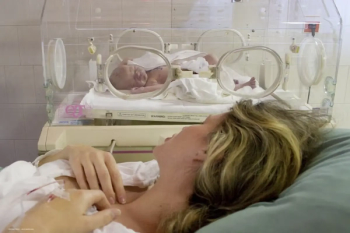
- Ophthalmology Times Europe October 2022
- Volume 18
- Issue 08
AI and teleophthalmology appear comparable to in-person DR diagnoses
AI and teleophthalmology both show very high level of agreement with in-person evaluations, although further studies are needed to reduce the number of ungradable images.
Reviewed by Eric Kuklinski.
The value of artificial intelligence (AI) is increasing as the technology behind it continues to develop. During the COVID-19 pandemic, when in-person evaluations were next to impossible, the need for using AI and teleophthalmology became clear, according to medical student Eric Kuklinski and colleagues at the Department of Ophthalmology and Visual Science at Rutgers New Jersey Medical School in Newark, New Jersey, United States.
The investigators explained that the pandemic led to increased mobilisation of teleophthalmology and AI resources to potentially provide screening for diabetic retinopathy (DR) and continuity of care for patients with DR. AI has the ability to assess numerous images in a short period of time and determine which patients need emergent care.
Mr Kuklinski and colleagues conducted a retrospective study to assess the ability of AI software to detect DR compared with teleophthalmology and in-person examinations conducted by a retina specialist. The analysis included 80 eyes of 40 patients (male, 45%; average age, 55.1 years).
Sixty percent of the patients were Hispanic, and 65% had a history of type 2 diabetes. The investigators evaluated the patient demographics, retinal photos obtained using the Canon CR-2 Plus AF Retinal Imaging Camera and the diagnosis of DR based on the International Clinical Diabetic Retinopathy (ICDR) classification scale, determined when a retina specialist performed a fundus examination at an in-person clinic visit.
AI software (EyeArt, Eyenuk) was used to grade the retinal photos. The eyes were classified as normal or having mild or more-than-mild DR. In addition, a retina specialist graded the retinal images remotely according to the ICDR classification scale, using TeamViewer software (teleophthalmology). The investigators then assessed the agreement between teleophthalmology, AI and in-person diagnosis of DR.
AI performance
During the in-person evaluation, a total of 33 eyes were diagnosed with no DR, five with mild non-proliferative DR (NPDR), nine with moderate NPDR, three with severe NPDR, seven with proliferative diabetic retinopathy (PDR) and 23 with regressed PDR, the investigators reported. Eleven eyes were ungradable via teleophthalmology, and AI could not grade 26 eyes.
Comparison of agreeability (using Cohen’s κ coefficient) between the in-person diagnosis and teleophthalmology was 0.859±0.058 (P<0.001), between the in-person diagnosis and AI 0.751±0.082 (P<0.001) and between teleophthalmology and AI 0.883±0.063 (P<0.001). The investigators reported that AI showed a substantial rate of agreement with the in-person diagnoses and near-perfect agreement with teleophthalmology for detecting the presence of DR in this patient group.
Results of the analysis also showed that teleophthalmology grading was in near-perfect agreement with the in-person diagnosis, which indicated that teleophthalmology is a reliable tool to use to remotely screen patients who may be ungradable by AI. However, the investigators offered the caveat that improvements are clearly needed because of the high number of images that are ungradable via teleophthalmology and AI. “Further studies should assess ways to reduce the number of ungradable images and create a trend analysis for multiple visits for a given patient,” they stated.
Eric Kuklinski, MS
E: [email protected]
This article is adapted from Mr Kuklinski’s presentation at the Association for Research in Vision and Ophthalmology 2022 annual meeting in Denver, Colorado, United States. He has no financial interest in this subject matter.
Articles in this issue
about 3 years ago
Knowing when to refer young patients to ocular genetics programmesabout 3 years ago
Tried and tested therapeutic options for meibomian gland dysfunctionabout 3 years ago
Effect of drusen and atrophy on automated segmentation in OCT imagesabout 3 years ago
Pearls for minimally invasive strabismus surgeryabout 3 years ago
Considerations when using IOLs in patients with complex corneasNewsletter
Get the essential updates shaping the future of pharma manufacturing and compliance—subscribe today to Pharmaceutical Technology and never miss a breakthrough.













































